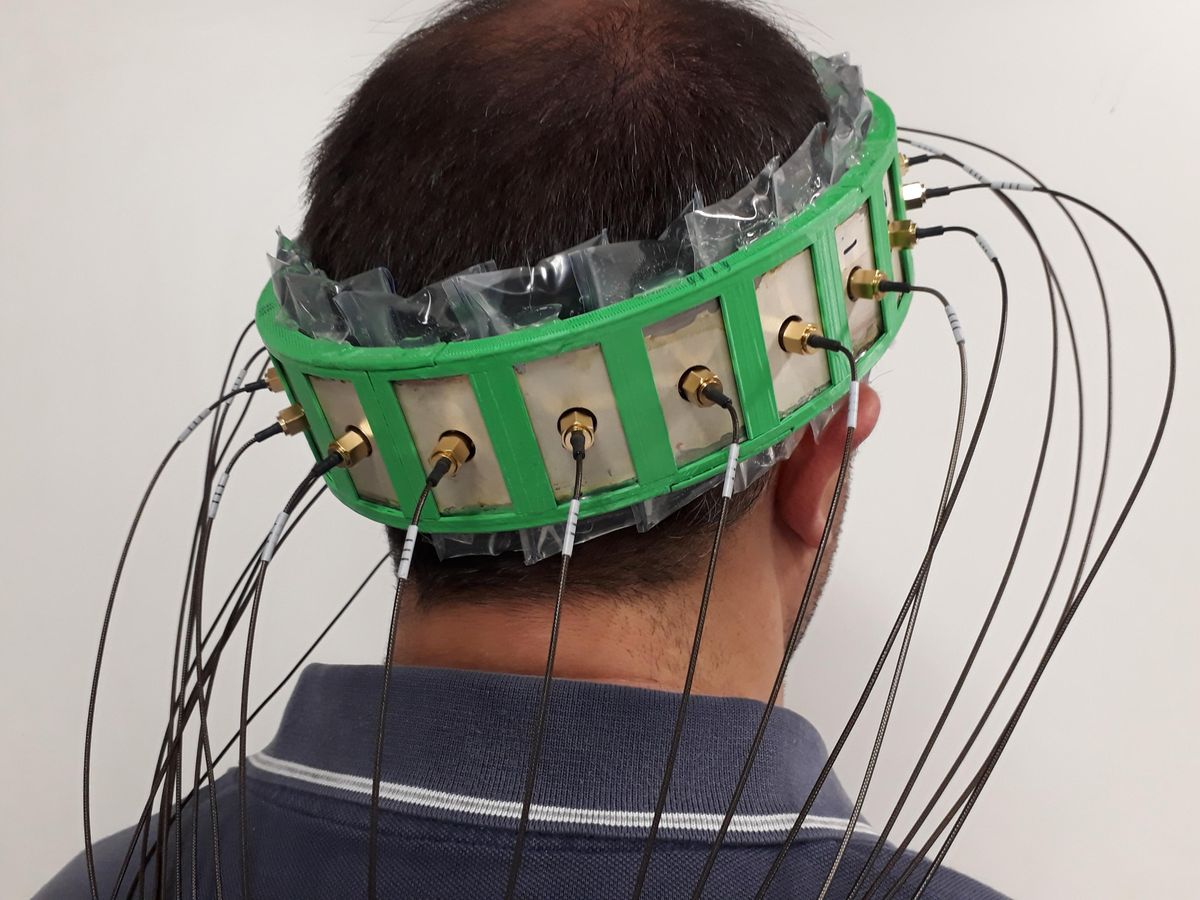This article is part of our exclusive IEEE Journal Watch series in partnership with IEEE Xplore.
When someone experiences a stroke, every passing moment leading up to treatment is critical. Ideally, patients should be diagnosed and treated within the first hour, often referred to as "the Golden Hour," in order to have the best chance at recovery. Given such a tight timeline, numerous research teams have been developing portable smart helmets for diagnosing stroke in patients as they are being transported to the hospital, rather than waiting until the patient arrives at the hospital to begin testing.
Many of the smart helmet designs being explored rely on ultrasound to image the brain and detect stroke; however, this approach has several downfalls. "Ultrasound usually requires skilled personnel in order to correctly interpret the resulting images," explains Alessandro Fedeli is an assistant professor in the Department of Electrical, Electronic, Telecommunications Engineering, and Naval Architecture, at the University of Genoa. He also notes that ultrasound doesn't penetrate the skull as well as, say, electromagnetic (EM) waves.
For these reasons, his team sought to create a smart helmet that relies on EM waves, along with a signal-processing approach, to detect and diagnose stroke. Notably, EM measurements are particularly helpful in the context of diagnosing stroke because the two types of stroke—ischemic and hemorrhagic—have different dielectric properties, which can be detected by EM. This allows the device developed by Fedeli and his colleagues to not only confirm the presence of stroke, but also determine what kind occurred. This more detailed information is useful, given that ischemic and hemorrhagic strokes require different treatment.
The helmet is made up of numerous antennas that are selectively activated to direct EM waves throughout the brain, and the returning signals are measured. A simple EM signal-processing algorithm alerts paramedics and other health professionals whether or not a stroke has occurred. A more complex algorithm, which requires more computational power, can then be used to determine the type, size and position of stroke.
The researchers tested their prototype through simulations that considered various stroke positions and dimensions (between 1 and 4 centimeters) inside the brain. They describe their results in a study published July 19 in IEEE Wireless Communications.
"With the signal processing approach, the overall accuracy is above 80 percent, which represents an interesting and an encouraging starting point," says Fedeli. "Concerning the EM approach, the results show that it is possible to create quite accurate images of the stroke inside the brain, and gain quantitative information about [the type of stroke]."
His team is hoping to test their design in a clinical trial in the near future. It will be interesting to see how theirs compares to a portable design by researchers at Yale University. This latter design, which relies on MRI data to diagnose stroke in the hospital setting, was tested in 144 patients and found to have 80 percent accuracy.
But cost and portability outside of the hospital setting are important factors. "It is worth noting that EM systems work in the microwave frequency band, similar to other widespread wireless apparatuses," says Fedeli. "Consequently, it is possible to realize compact, portable and rather unexpensive devices that can be used in the ambulance or at a patient's home."
But first, clinical trials are in order. "We hope to be able to perform clinical trials in the near future, possibly in cooperation with local hospitals," says Fedeli. "We also know that there are several other EM-based systems for stroke detection proposed by other research teams that have been already validated or are in course of validation with clinical trials, with positive and promising results."
This article appears in the October 2021 print issue as "Smart Helmet Provides Early Stroke Diagnosis."
Michelle Hampson is a freelance writer based in Halifax. She frequently contributes to Spectrum's Journal Watch coverage, which highlights newsworthy studies published in IEEE journals.



